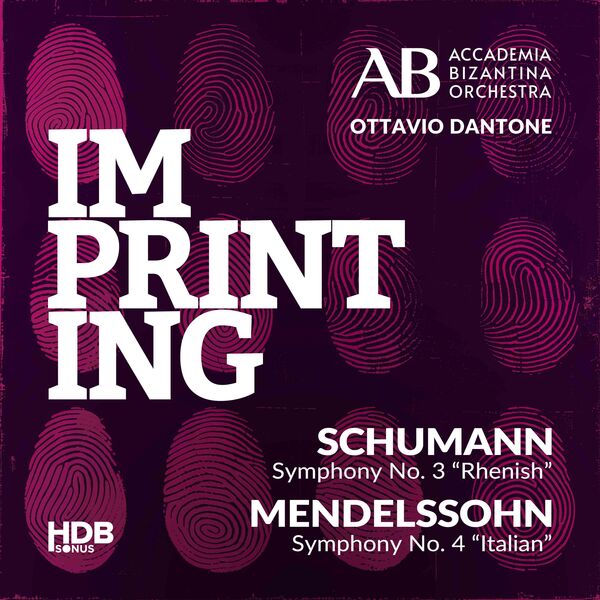Narratio Quartet
241:06 (4 CDs)
Challenge Classics CC72982
This completes the Narratio Quartet’s path-breaking and challenging set of the Beethoven string quartets. EMR reviews of the two earlier sets issued can be found here and here respectively. For the sake of clarity, it should be noted that the F-minor Quartet, op. 95 of 1810, usually tacked on to the middle period quartets, is included in the present set, chronologically if not entirely stylistically a little incongruously since it predates the genuine ‘late’ quartets by 15 years.
As noted in regard to the earlier sets, the Narratio’s period instrument performances are in some ways a reaction to the philosophy of the foundations of the 20th-century early music revival. That sought to be truthful (or authentic) in its treatment of the music of the past by means of the use of instruments of the period and faithful adherence to matters such as rhythm and tempo. Yet we know that such a ‘pure’ manner of interpretation was not the way music was played in the time of Mozart and Beethoven, that greater freedom was admitted to performance for the purposes of creating expressive gesture. That freedom included such features as rubato – rhythmic flexibility – vibrato employed for expressive purpose and portamento, the ‘slurring’ or sliding from one note to another. Needless to say, such means should be carefully thought through before use, and it is much to the credit of the Narratio’s that they have been thinking about and experimenting with the use of expressive devices in Beethoven’s quartets over a period of some 15 years. It is interesting to note too that this rethinking of what we call ‘period performing practice’ is increasingly extending to vocal music, where topics such as vibrato, rubato and portamento are also becoming questioned and debated. Finally, before brief observations on the individual quartets, it has been encouraging to note that throughout the Narratio’s set they have been happy to engage with Beethoven in one aspect of his music so frequently overlooked or forgotten – his wit and sense of humour. It stems, I think, from the 19th-century elevation of the composer to the status of a god, only to be the subject of awesome worship, not a great composer who laughs at us or invites us to laugh with him.
The String Quartet in F minor bids fair to be considered one of the knottiest of his works. Composed in 1810, a year that witnessed little productivity on Beethoven’s part, it was published five years later. Clues to the intensely personal nature of the work can be found in Beethoven’s designation of it as ‘quartetto serioso’ and his curious words to Sir George Smart when the composer sent a copy to London, ‘The Quartett (sic) is written for a small circle of connoisseurs and is never to be performed in public’. The Narratios attack the opening with uncompromising vigour, while the almost immediate lyrical response provides a fine example of their use of portamento and rubato. Lasting little more than five minutes, the movement here has a concise intensity that never lets up. This economy, the impression of saying nothing superfluous, characterises the quartet as a whole and is well caught by the Narratios who also make much of the lovely cantabile that forms the answering motive in the second movement.
It would be almost fifteen years before Beethoven returned to the medium. He then between 1824 and 1826 completed the five quartets now universally referred to as ‘the Late String Quartets’. These works, in particular the middle three (opp 130, 131 and 132), suggest a summation that not only expands the string quartet – structure, radical uses of tonality, texture, rhythm – to a degree that would inhibit the approach to the form by composers at least until the 20th century.
The Quartet in E-flat, op 127 occupied Beethoven between 1824 and 1825. Often considered the most ‘normal’ of the late quartets, it nevertheless stakes its claim to be unusual by including a slow movement that is virtually twice as long as any other of the three remaining movements. Marked ‘Adagio, ma non troppo e molto cantabile’, its nearly 15 minutes duration take us into a world of intense introversion that demands a concentration from both players and listener, here superbly achieved by the Narratios. The players also react well to the more animated central section, one of the many passages throughout these performances where the listener’s attention is drawn to the outstanding balance these players achieve. By contrast the Scherzo, with its constantly iterated perky theme reminding us how economical Beethoven could be with thematic material, shows us a more robustly committed side of the Narratios, the central folk-dance like Trio is celebrated with uninhibited pleasure and not a little of the good humour alluded to above.
If there is any doubt that Beethoven was entering new territory, it can be firmly dispelled in the face of the opening of the B-flat Quartet, op 130 of 1825. In every sense – sonority and expansive breadth – this is music that occupies a landscape greater than had previously been attempted. It’s a moment that the Narratio Quartet captures to near perfection, the massive sound picture enhanced by the satisfyingly bronzed sound of bow on gut strings. This sense of being at one with the music pervades the work, planned on a unique scale that includes six movements. The penultimate of these is the formidable Grande (or Grosse) Fugue, a movement found so difficult by the original performers and friends of the composer that the latter persuaded Beethoven to write a more concise, user-friendly alternative. Today it is that movement that is more frequently played. Overall, the performance is an impressive illustration of the manner in which the players invariably and instinctively seem to be at one with the music. In this context, it should be mentioned that tempi, which I’ve not mentioned until now, are never a cause for concern. The intelligence of the players can also be noted that although they play the famous Cavatina ‘molto espressivo’ as Beethoven asked, they keep such external signs of expression as portamento and rubato under strict control. Music of such sublime simplicity and introversion has no need of such tools.
The only other movement among this set that the composer marks ‘molto espressivo’ is the Adagio of op 131 in C-sharp minor (composed 1825-26) and here was one of the rare cases I disagreed with the use of portamento, in the first violin’s opening upward sweep from G# to C#, a gesture subsequently imitated by the other players. Like the Cavatina, it is fundamentally a simple, but profound almost hymn–like subject that needs no adornment. Although the quartet is in seven movements (two of which – the second and fifth – demand and here receive a virtuoso response from the performers) it is fundamentally structurally closer to the tradition four-movement quartet. The third movement, a brief accompanied recitative, is for example clearly linked to the monumental slow movement, a sublime aria of the utmost tenderness which although passing through a period of more animated disquiet ends with music and performers totally at peace and at one.
As with the C-sharp minor quartet, the Quartet in A minor, op 132 of 1825 has multiple-movements, here five dominated by the expansive opening and third movements. The latter is headed ‘Heiliger Dankgesang eines Genesenen’ (a holy hymn of thanks of a convalescent to a Deity), a reminder that Beethoven had been seriously ill during the preceding winter. If this movement can thus be seen as autobiographical, then the same surely applies to the opening Assai sostenuto, which appears to arise out of the memories of some unrelated nightmare. Both these passages are played with deeply introverted concentration by the Narratios, the sustained bass chords of both passages played with rasping intensity. But op 132 is by no means a tragic quartet; as so often with the mature quartets, it passes through many moods, the final Allegro appassionato embracing both affection in its lilting opening and deeply troubling thoughts in the animated central section.
Beethoven’s final string quartet, op 135 in F, on first appearances appears to mark something like a return to convention. It is cast in four movements and, unlike its immediate forbear,s plays no longer than a quartet by Haydn or Mozart. But such appearances are deceptive and not only ignore the sublime third movement, marked Assai lento, cantante e tranquillo, which enjoys a profoundly spiritual inner life of its own quite as intense as the Cavatina of op 130 or the Andante of op 131, but the autobiographical element of the final movement. This has occupied Beethoven scholars since the work’s composition, with its opening quotation of the three-note motif, ‘Es muss sein?’ (must it be?), later answered ‘ja, es muss sein’ (yes, it must be).
Once again, there is an autobiographical explanation for the origin, if not for Beethoven’s use of the motif here in the final quartet movement he would write. The more I hear these quartets, the more I feel there is possibly an even greater personal element to them than we realise. Such thoughts have certainly been enhanced by these Narratio Quartet performances, which demand to be heard even by those familiar with this music. It should be added that they are presented in superb sound that aids the multitude of sonorities admirably. There will be things here that surprise, things to relish and, perhaps, things to disturb or even infuriate. One thing I can promise: you will not be bored.
Brian Robins









